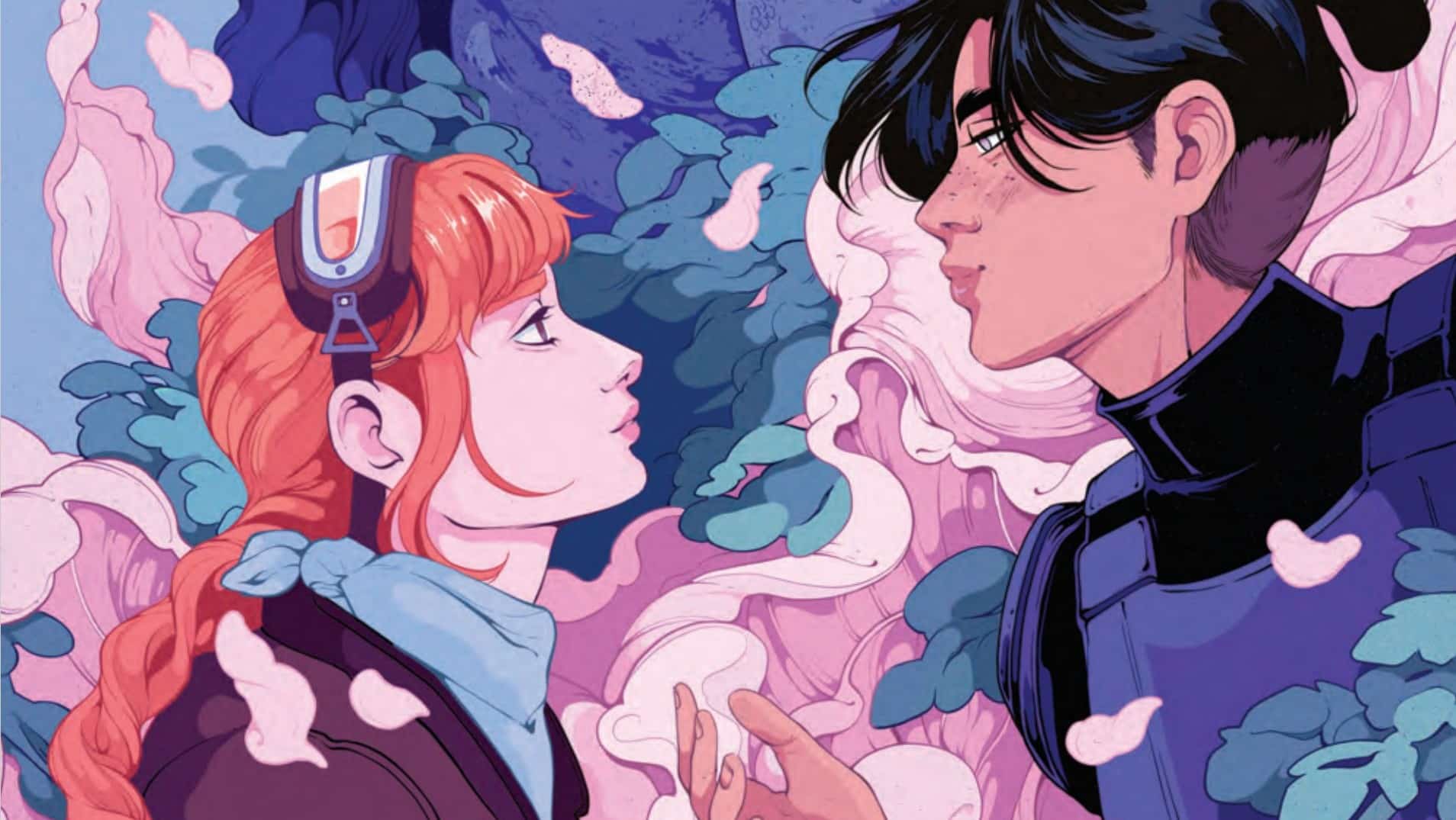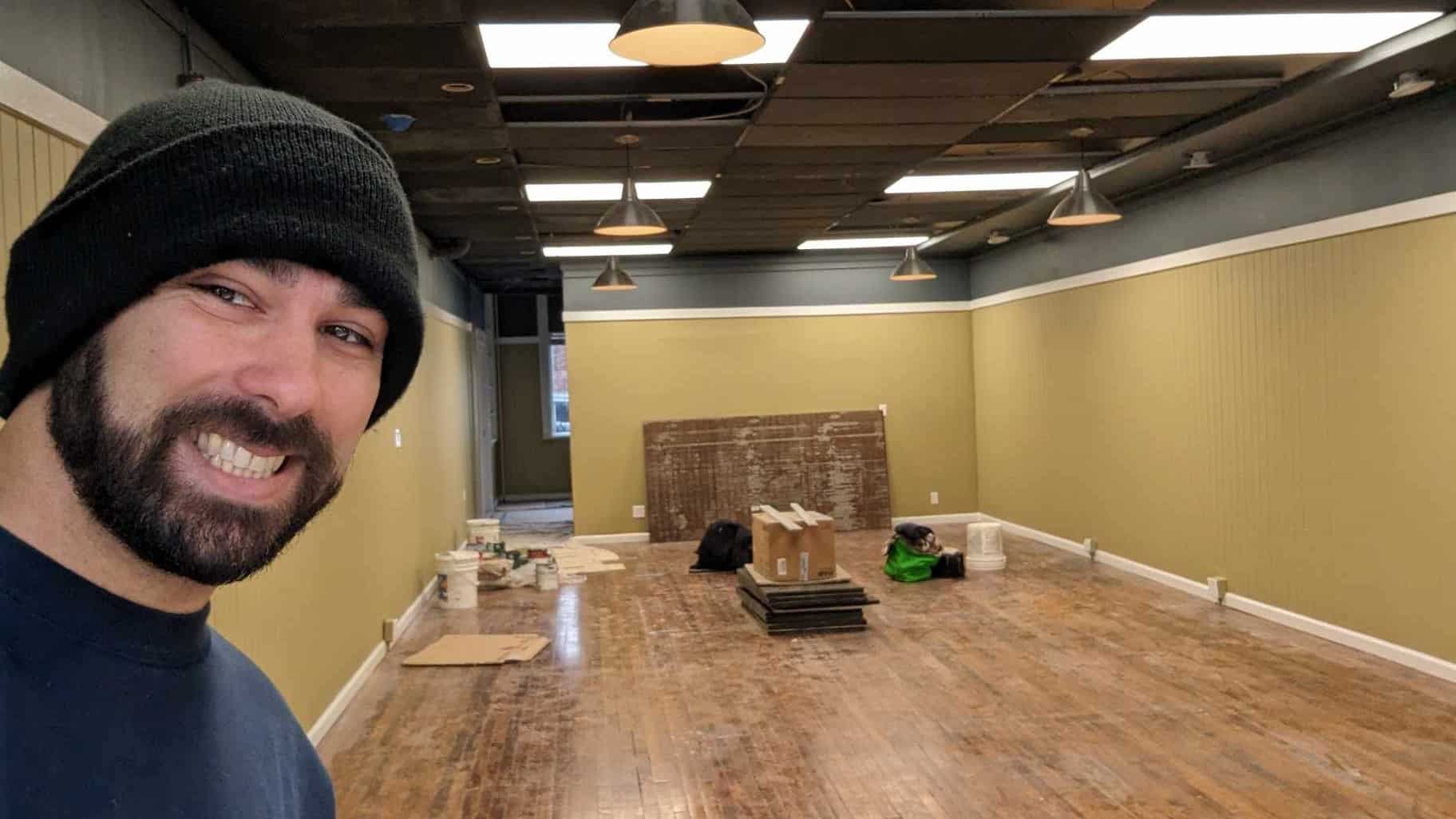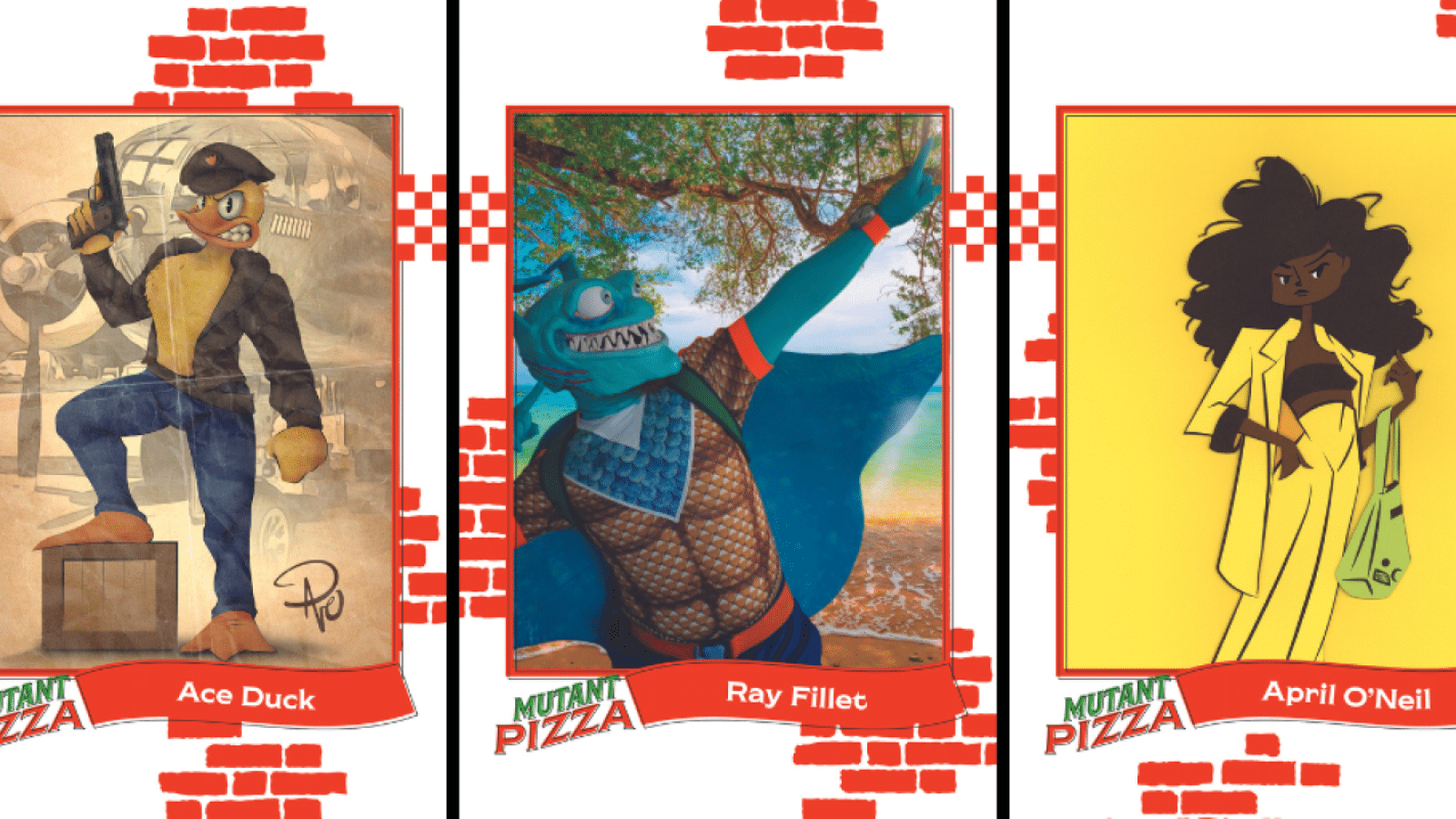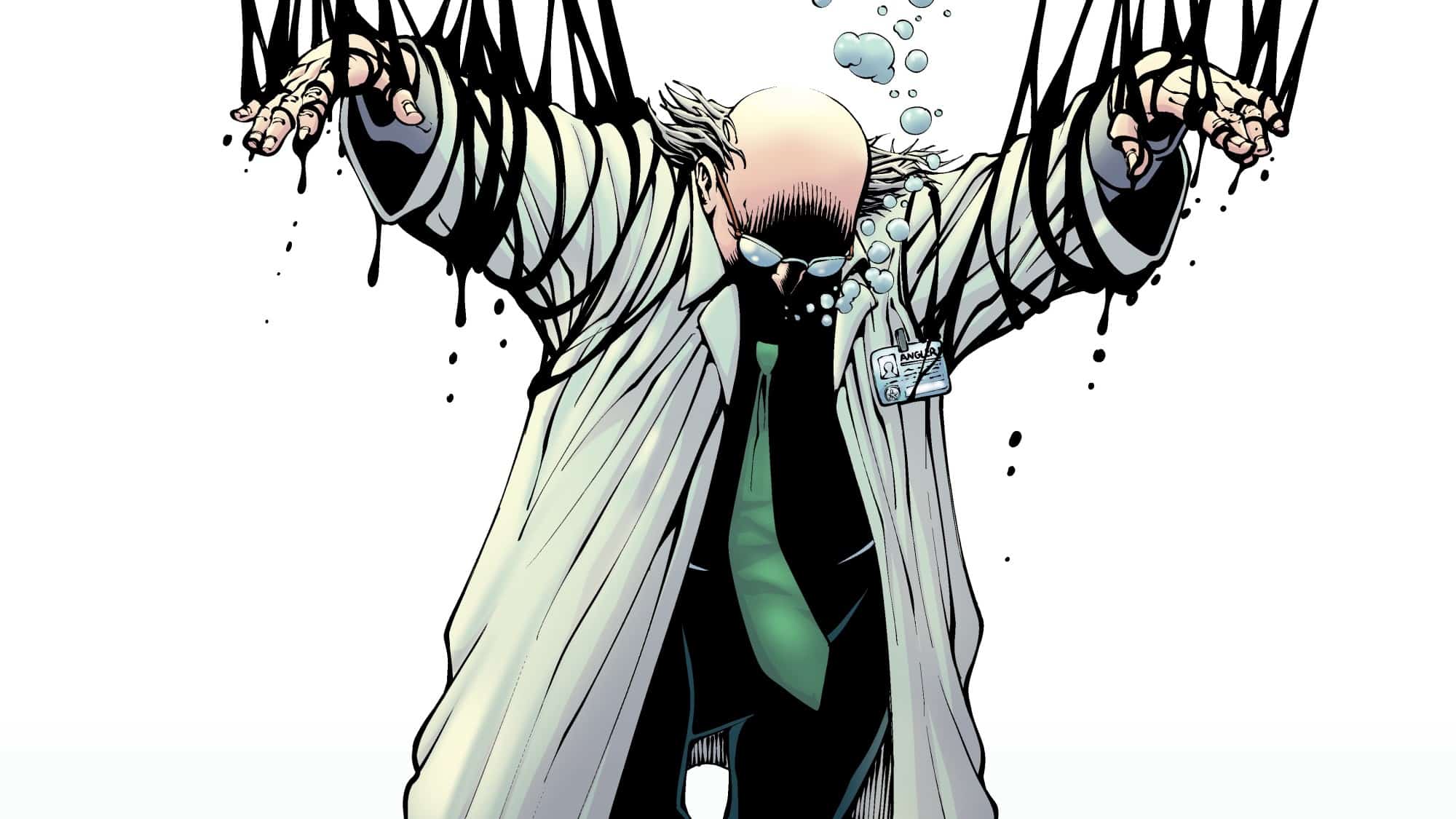Cássia Costa hasn’t been having an easy time. New school, new city, new … mystical dragon-related powers? Yes, Inferno Girl Red, a 100-page OGN just launched on Kickstarter, isn’t just the story of the new girl in town, or the new superhero in town, but a little bit of both. We talked with writer and creator Mat Groom (Marvel’s The Rise of Ultraman) about the book’s inspirations, the characters and the quest for the right artist.
Matthew Lazorwitz: What’s the elevator pitch for Inferno Girl Red?
Mat Groom: “Cássia Costa, an intensely pragmatic and rational teen girl, gets a shot at a fresh start when she’s invited to a prestigious and cutting-edge school in the near-utopian Apex City. But that fresh start is put at risk when an ancient cult, and their army of demons, rips Apex City out of reality.
Now, a magical dragon bracelet has rocketed into Cássia’s life and affixed itself to her arm, giving her and the city a fighting chance at survival — but only if she can muster the faith in herself (and the future) required to wield the belief-powered bracelet … so she can live up to a secret legacy, defend those she cares most about and rescue Apex City as Inferno Girl Red.
I suppose I’d need a long elevator ride for that, though. So if I had to be even quicker — it’s a superhero graphic novel that mixes the high school super-heroic drama of Spider-Man: Into the Spider-Verse with the dynamic storytelling and world-building of tokusatsu and the intrigue and relationship drama of boarding school fiction, to tell a sweeping story about hope in the face of darkness, and action in the face of apathy.
ML: How did you gather your creative team? You work with editor Kyle Higgins on Ultraman, but where did you gather the rest of the crew?
MG: The search for an artist/co-creator was the hardest part, without question. I think it almost took us a full year? My fault, though. I knew that, if we wanted Cássia to feel at all authentic, we’d need the lived experience and perspective of a female co-creator … so that obviously narrowed the talent pool a bit. But I was also being picky — I wanted to find someone who could pull off dynamic action, sell raw emotion and communicate the teenage experience in a genuine way.
Kyle and I looked at hundreds of portfolios, I spent literal whole days scrolling through hashtags on Twitter like #VisibleWomen, and we asked just about everybody we knew. It was that last approach that ended up paying off — our Ultraman collaborator recommended Erica D’Urso, and as soon as we saw her work, we knew she’d be able to handle all those different elements I mentioned. What I didn’t know was that she’d also turn out to be a wildly inventive worldbuilder, a generous collaborator and just about the nicest person you could ever hope to meet.
Our colorist Igor Monti also came via recommendation, this time from Daniele Di Nicuolo, who Kyle worked with on Mighty Morphin Power Rangers. If you’ve read Mega Man: Fully Charged, you’ll know that Igor does really striking work — it’s this super-vibrant, electric palette, but it’s never overwhelming, because he so expertly guides you through the mood of the scene with his choices. Plus, what he does with light and shadow … it really makes “colorist” seem like a reductive and ill-fitting descriptor.
Becca Carey, our letterer, works with Kyle on Radiant Black, and I’m a big fan of what she does, so I reached out to her very early on. We asked her to explore a slightly different approach to lettering, to think about it like an outlet valve for all of this emotion, in the same way the superheroic action is, and she absolutely nailed it — while still keeping the reading experience really clear.
I honestly think what Erica, Igor and Becca do on the page together is something unique. It feels like a look into the future, at what comics might be like in a few years. They’re a dream team.

ML: The idea of super powers powered by faith being given to a rationalist is absolutely fascinating to me. Where did that idea come from? What is it about that concept, being powered by belief, that speaks to you?
MG: It’s where it all started, actually. It’s something that’s been on my mind a lot. Because we’re all powered by belief, right? Anything that we want to do, or want to achieve, that’s a longshot, that’s statistically unlikely … we have to believe, against evidence, that we’re able to do it if we’re to stand a chance of making it happen. And we’re all, collectively, facing such huge, longshot challenges … we need that belief, maybe now more than ever. But when we start believing when we don’t have reason to, that comes with the risk of falling into self-delusion, which can obviously be a really toxic path.
That contradiction, the tension there, and the urgent need to resolve it if we want to change our current trajectory … that felt like a story worth diving into.
Our lead character Cássia’s mom, Ana, became something of a pariah many years before our story starts (for unjust reasons), so Cássia and Ana had to move from city to city as Ana looked for work, barely getting by. Which isn’t to say that Cássia’s had a miserable life or anything, Ana’s a supportive and joyful mother, but seeing how the world has treated Ana has meant Cássia has no illusions about how harsh and unjust the world can be. So when she comes to Apex City, this place that’s not perfect but is really a beacon of the progress we can make, and the school Cássia gets to attend in particular, what they teach there just doesn’t gel with her understanding of the world at all. So when this optimistic place is put in terrible danger, and it falls to Cássia to save it, but to do so she has to find a way to embrace belief despite all that she has experienced … I think it’s a powerful engine to really drill to the core of that tension I was talking about.
ML: This is inspired by both American teen superhero comics and the Japanese tokusatsu genre. What are some of your favorite examples of both?
MG: I know I’m immediately breaking from the conceit of the question, so I’m sorry about that, but for American superheroes I mentioned Spider-Man: Into the Spider-Verse earlier, seeing that really jolted me into realizing how fresh and relevant and meaningful this genre could still be, with the right approach. And sometime after that I read Shadow of the Batigrl by Sarah Kuhn and Nicole Goux, which again (in quite a different way) just made me reconsider what the genre could do, the types of stories it could tackle and the sorts of audiences it could serve. My love for that book was why I reached out to Nicole Goux to do an Inferno Girl Red print for the Kickstarter campaign, actually, and I’m so glad she was able to.
For tokusatsu, the show I’ve been ranting about incessantly recently is Kamen Rider Build. Again, because of how it really expanded my understanding of what superhero stories could be. It’s a story all about the moral consequences, the moral and psychological cost, of being involved in a war. And that might seem like well-worn ground, but I’ve never seen it handled like this. It’s charming and haunting, thrilling and deeply melancholy. And then sometimes the main character transforms into a combination of a rose and a helicopter, or a pirate and a train. So it’s amazing, is what I’m saying.

ML: The other genre you mention as inspiration is the British boarding school tale. That’s a lot of great tastes that probably taste great together, but how do you play so many genres without one becoming a hat on a hat (or superhero helmet as the case may be)? Do you even think about them separately, or is it all just your story and these are things playing in your own head in the background?
MG: None of those options, actually! I think about them kind of like components of a cyclical system!
What I love about boarding school stories is that they take an inherently dramatic period of life (when you’re at school, as a teen) — and then it removes the ability of the protagonists to get away from the school, to get away from the drama. It’s this pressure cooker of emotion.
Then, the superhero/tokusatsu elements become the release valve for all of that pressure — but because of the nature of the valves, it’s released in this wild, energized and dangerous fashion … which generally results in more drama!
So these two genres feed each other, which is bad if you’re inside the story and just want to have a super chill time … but for a storyteller, it’s a really useful configuration.
CXF: Do you have future plans for Cássia if this campaign is a success? Is this something you have future volumes of already sketched out in your head, or something more self-contained?
MG: We’re all in love with this character and this world so, yeah, we’d love to do more. In fact, if we’re funded, you might see Cássia turn up in some unexpected places…
But, also, we’re all big believers in delivering a story with a beginning, middle and end, that’s satisfying and rewarding in itself. After all, if we get to make this book, it will only be because of our backers … so our first and most important priority is giving them a satisfying book that rewards their investment, regardless of what might come later!
ML: Why did you decide to go with Kickstarter for this project, versus more traditional self-publishing or going through a publisher like Image?
MG: Actually, if we get funded, Image has agreed to publish a softcover version of Inferno Girl Red in the direct market and bookstore market. It won’t have the Kickstarter-exclusive cover, or the Kickstarter-exclusive concept art, though. And it won’t hit shelves until after our backers get their hardcovers.
The reason we decided to go with Kickstarter really came down to the financials of it. We were too attached to this world to give up creative control of it … but I couldn’t afford to pay the art team myself, for 100 pages … but I wasn’t about to ask them to work for the better part of a year without money to pay their bills or put food on the table, either. Writing’s easier than art, I’ve been able to write the book around my day job and writing on Ultraman, but Erica’s work in particular requires full-time attention.
We perhaps wouldn’t have had to go this route if we’d released the book as single issues, but I felt in my heart that this story was a novel. I love writing single issues, and in Self/Made, I particularly enjoyed playing with that form, but I felt strongly that here we needed the breathing room to not be pulling off a beginning, middle and end every 20(ish) pages like you really should when writing single issues. Plus, I suspect that the novel format might be more familiar to people who are new to comics, it might be more of an appealing entry point. That’s my hope, anyway.
So, yeah, we’ve decided to take our story to Kickstarter, to see if the comics-reading community decides that this is a story they’d want to read — and if they do, I’m confident it’ll be the best possible version of the story we’d ever be able to make, without compromise and without limitation.
You can back Inferno Girl Red on Kickstarter HERE. The campaign runs through May 5.
Matt Lazorwitz read his first comic at the age of five. It was Who's Who in the DC Universe #2, featuring characters whose names begin with B, which explains so much about his Batman obsession. He writes about comics he loves, and co-hosts the creator interview podcast WMQ&A with Dan Grote.






